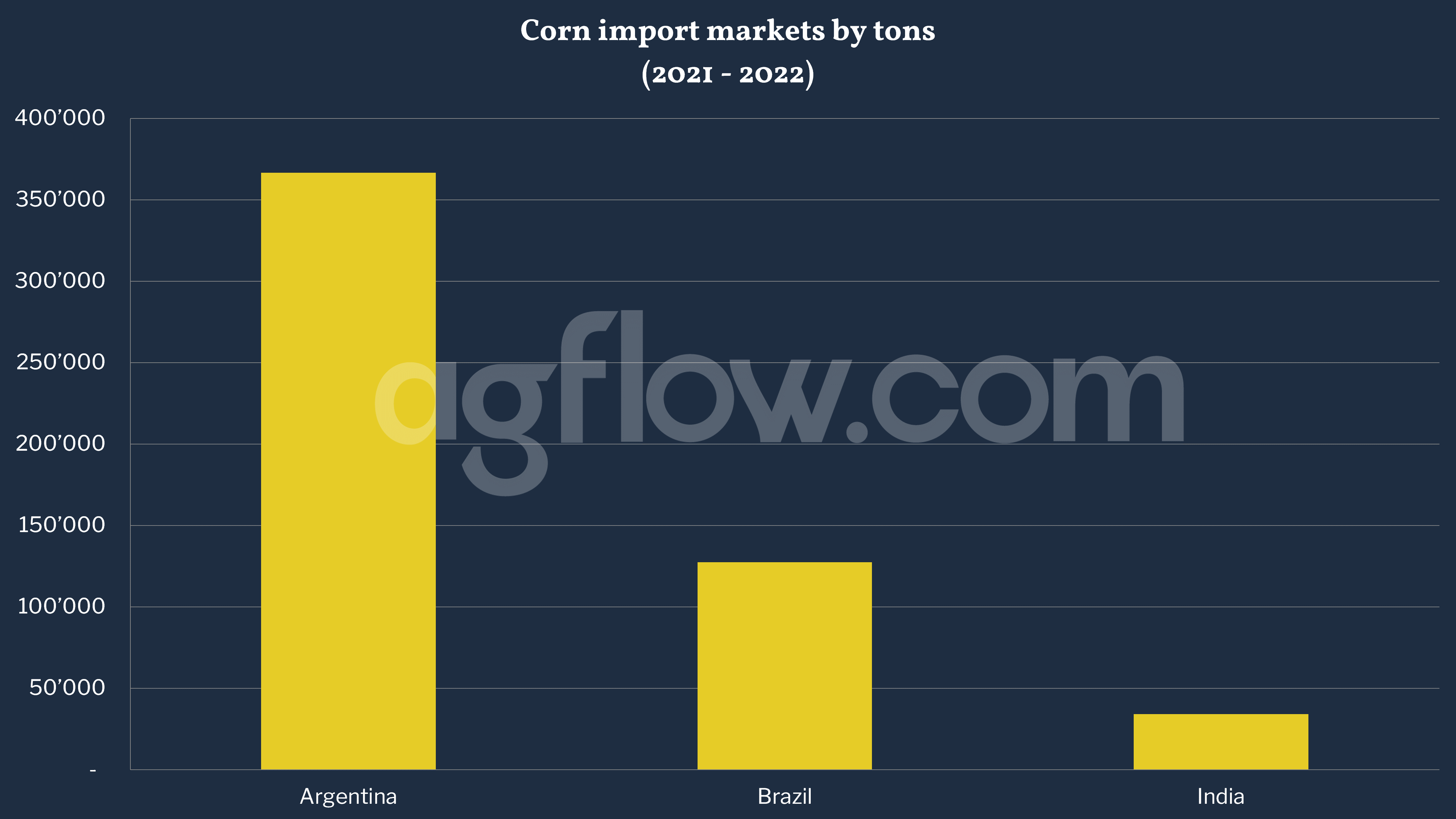Bangladesh Corn: Roots Can Go 6 Feet Deep
Reading time: 2 minute
Corn planted in November/December 2021 and harvested in March/April 2022 is Bangladesh’s first crop of MY 2022/2023. In some areas of the country, farmers also grow summer Corn, planted in March/April and harvested in June/July.
Corn is currently grown on more than 101,300 hectares in the northern region of Bangladesh, which produces one-third of the national supply, according to Government figures. As the impacts of climate change drive more frequent and devastating floods in the north, Mahfuzul Haque, Senior agriculture expert at the Bangladesh Agricultural Research Institute, says Corn can help farmers adapt and prosper.
“Its root can go as deep as 6 feet (1.83 m) to absorb water… Paddy (rice) roots can go only down six inches in sandy soil,” explained Haque. And the “huge demand” in Bangladesh for Corn – used to make everything from poultry feed to sugar and paper – means it is more profitable than rice or wheat, he added. Farmers can earn up to 850 taka for about 40 kg (88 pounds) of Corn, about 15% more than they would earn growing rice and 40% more than wheat, said Rafiqul Islam, an Agriculture officer in Hatibandha upazila.
According to industry, the average annual demand for Corn in Bangladesh is 7 to 8 million tons, while domestic production meets about 65 percent of the total demand. The USDA’s MY 2022/2023 Corn harvested area forecast is 560 thousand hectares. For MY 2022/2023, the USDA forecasts Corn production at 5 million tons. For MY 2021/2022, they estimated Corn area harvested at 550 thousand hectares and production at 4.9 million tons.
In June 2022, Corn’s wholesale and retail prices were BDT 31.04 ($0.34) per kilogram and BDT 33.05 ($0.36) per kilogram, respectively, hitting a six-year high. The wholesale and retail prices of Corn in June 2022 were approximately 41 percent and 29 percent higher, respectively, from the same period last year.
The cattle and poultry feed industries in Bangladesh are the major consumer of Corn. According to the Feed Industries Association of Bangladesh (FIAB), Corn accounts for 60 percent of feed ingredients, while soybean meal and broken rice account for 30 percent and 10 percent, respectively. Due to the higher price of Corn, FIAB stated that its members might replace some Corn with broken rice and bran. However, overall Corn consumption may rise due to the expansion of the poultry and cattle industries in Bangladesh.
MY 2022/2023 Corn import forecast is 2.2 million tons. For MY 2021/2022, Corn import estimate was 1.95 million tons. India is the leading source of imported Corn. In general, Bangladesh imports over 80 percent of Corn from India, with the remainder from Brazil. Importers look to India for imports due to its geographic proximity, cheaper transportation and logistics, and shorter shipment time. According to AgFlow data, Argentina led the Bangladesh Corn import market with 0.3 million tons in 2021 – 2022, followed by Brazil (0.1 million tons) and India (0.03 million tons).
Bangladesh Government Support for Corn
With training, financial assistance, and incentives, the Government is encouraging farmers all over Bangladesh to grow Corn in a bid to move away from thirstier crops and meet demand, said MD Moniruzzaman, regional deputy director at the Department of Agriculture Extension.
Agriculture Minister Mohammad Abdur Razzaque noted: The number of farmers starting to grow Corn is “increasing day by day.” If we can properly utilize sandy land for Corn cultivation, then we will be able to obtain extra Corn for export within five years.
Other sources: https://www.weforum.org/
Free & Unlimited Access In Time


